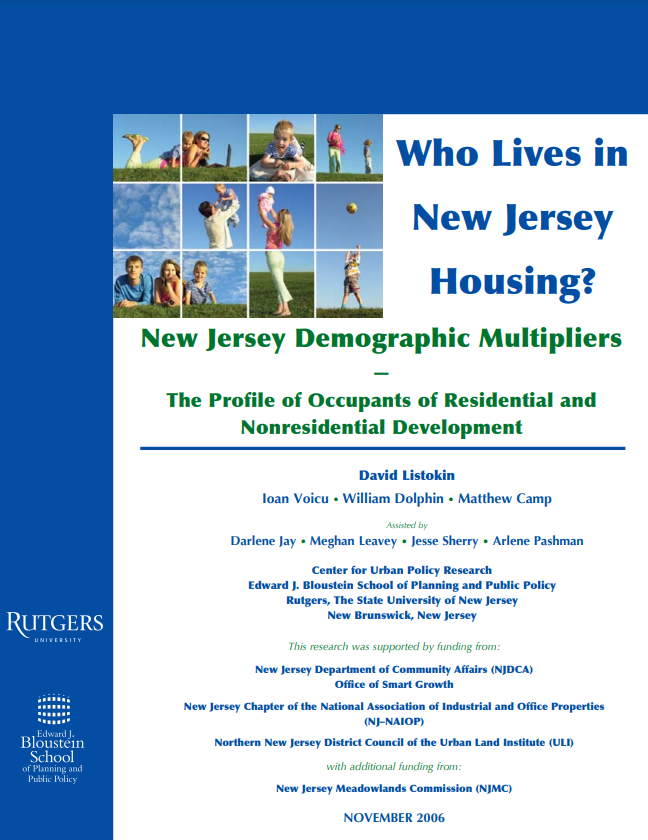In the 1970s and 1980s, researchers at Rutgers University published a series of national studies (hereinafter, the “Rutgers studies”) that contained information on demographic multipliers—the average number of people and the average number of school-age and public school children found in newly built housing units of different types and sizes. The Rutgers studies provided demographic information for the nation, and for each of the census regions (e.g., Northeast United States) and census subregions (e.g., Middle Atlantic States, which includes New Jersey).
The Rutgers studies were widely applied throughout the United States as well as in New Jersey. Inevitably, however, the Rutgers studies became dated over time and do not reflect the demographic reality of a noticeable decline in the average household size and the average number of pupils per housing unit. For instance, the number of public school children in the average newly built New Jersey 2-bedroom townhouse dropped from 0.20 in 1980 to 0.13 in 2000, a decline of more than one-third. In other words, the introduction of 100 2-bedroom townhouses in New Jersey as of 2000 would generate only about 13 public school children as compared to 20 pupils two decades earlier. Additionally, there is evidence of a particularly low demographic generation for such recent development configurations as transit-oriented development (TOD).
In short, the practice of using the existing published Rutgers studies produces an erroneous overstatement of the population generated by new development in New Jersey, especially in housing with a strong transit orientation and infrastructure in place.
To improve the state of our knowledge, this publication by Rutgers University produces demographic information on household size and pupil generation that is: 1. current (incorporates the latest demographic data from the 2000 census); New Jersey-specific (contains demographic data unique to this state alone and field-tested in New Jersey); and 3. incorporates the
experience of emerging development categories, most notably TODs.
The document’s data are invaluable for accurate demographic projections and development impact assessment. It is important, however, that the data not be abused to exclude certain categories of housing, such as homes with more bedrooms, or for that matter housing in general, because of the apprehension that development will generate “too many” new residents and public school children. That exclusionary perspective does not acknowledge current data (the demographic multipliers have declined in size over time), subverts good planning (smart growth calls for
a range of housing and a mix of land uses), and violates the Mount Laurel principle of all communities in New Jersey having the obligation of meeting the spectrum of the state’s housing needs
This research was supported by funding from:
- New Jersey Department of Community Affairs (NJDCA)
- Office of Smart Growth
- New Jersey Chapter of the National Association of Industrial and Office Properties (NJ–NAIOP)
- Northern New Jersey District Council of the Urban Land Institute (ULI)
With additional funding from:
- New Jersey Meadowlands Commission (NJMC)
